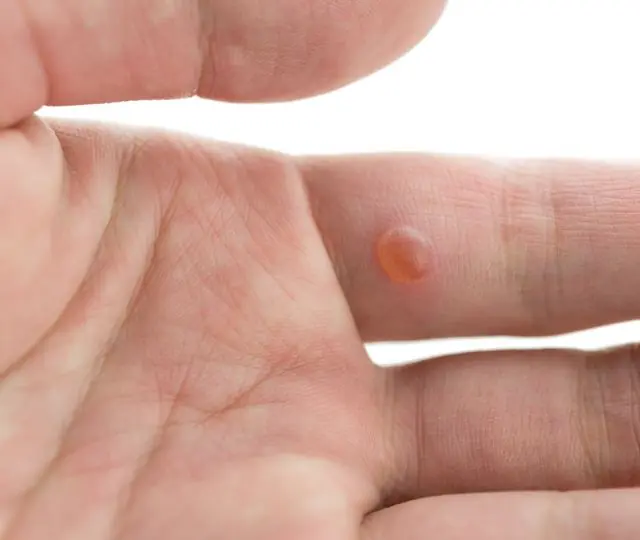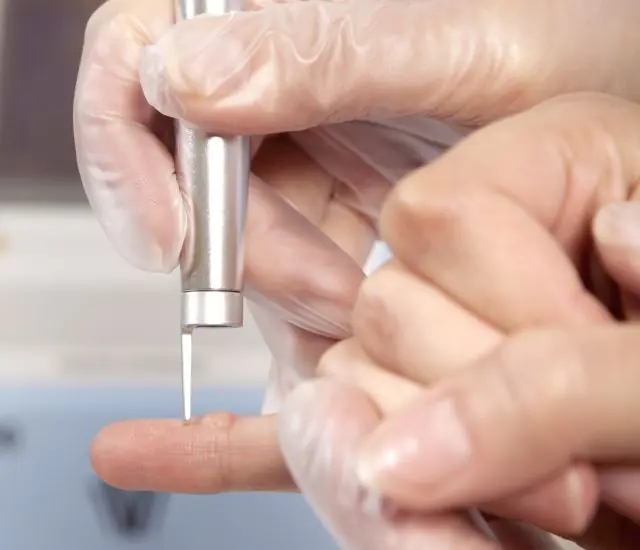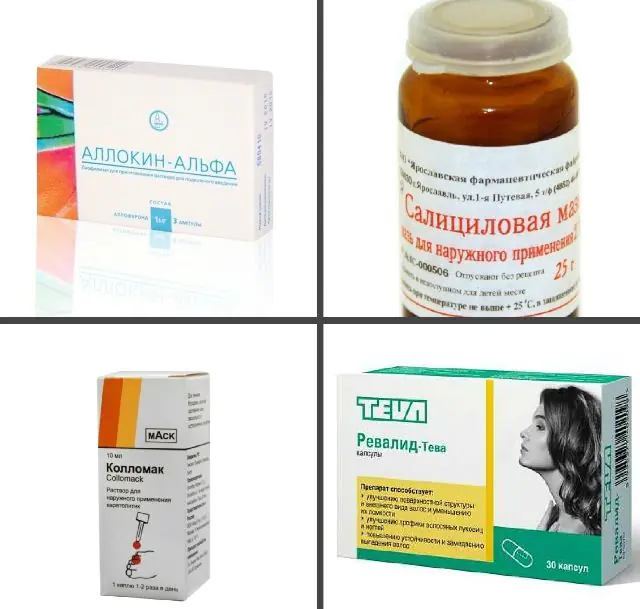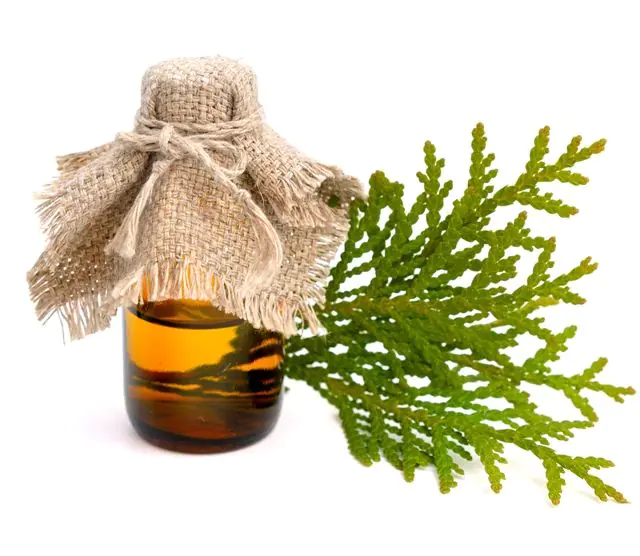
- Reasons for appearance
- What do warts on a finger look like?
- Treatment options
- Wart removal
- Medicines
- Folk remedies
A wart on a finger is a benign neoplasm of a viral nature. The causative agent that provokes the appearance of such growths is the human papillomavirus. Warts are considered safe formations because... extremely rarely provoke the development of cancer. However, this fact does not mean that treatment is not required at all. This article provides detailed information about the etiology of the disease, external signs and modern treatment methods.
Causes of warts on the finger

Warts are a common occurrence because... The human papillomavirus, which causes their growth, is highly contagious and does not spare either adults or children. The pathogen, getting on the skin, penetrates into the tissues through the slightest damage and remains in the body forever. At the same time, different levels of viral load are observed at different times, i.e. The population of the microorganism either grows or contracts. The disease can be asymptomatic for a long time. The incubation period can vary significantly in each specific case and ranges from 1-6 months to several years. All this, without a doubt, affects the nature of external manifestations. Thus, an increase in the activity of the virus causes the appearance of those same warts on the fingers, feet, knees and other areas of the skin.
The surest way to become infected is considered to be direct contact with an already infected person. HPV is often transmitted sexually, so unprotected sex or promiscuous sex life most likely provokes an increase in the incidence. However, most often the growth of warts on the fingers is caused precisely by contact of the upper extremities with contaminated surfaces, be it the hands of a virus carrier or objects that he has just used - a pen, cutlery, towel, book, etc. All public premises are considered places of increased danger, but especially those where there is a high level of humidity.
Even a baby can become infected from its mother. This happens during childbirth.
When warts are localized on the fingers, there is an increased risk of self-infection, i.e. rapid spread of infection to the face and other parts of the body. The reason for this is the susceptibility of the growths to frequent injuries, which lead to the release of a large amount of the pathogen to the surface, and the fact that the fingers come into contact with all other skin and can transfer the virus to them.
The reality is that the answer to the question of why warts appear on the fingers is quite ambiguous and involves many provoking factors. First of all, the development of a viral infection is facilitated by a decrease in the immune status of an infected person, when the body becomes unable to resist the activity of the virus, keep its population at the same level and prevent the uncontrolled proliferation of epithelial cells in the form of a wart on the finger or other parts of the body. Here, too, everything is ambiguous, because decreased immunity also has a number of reasons. This includes an unbalanced diet, medication abuse, bad habits, and emotional and physical overload.
What else causes warts on fingers? Various acute and chronic diseases lead to the activation of the pathogen, for example, severe colds, diabetes, HIV, sexually transmitted diseases, skin pathologies, etc. An individual feature such as hyperhidrosis or increased sweating also stimulates the development of pathogenic microflora.
Lack of daily care and poor personal hygiene also allow HPV to affect larger areas of the skin. Unwashed hands, untreated injuries, dehydrated and chapped skin, the habit of biting nails, the presence of hangnails - all this can cause warts on the fingers.
- Read more about the causes of warts on hands
What do warts on a finger look like?

Photo of warts on fingers
Most people confuse warts with other skin formations, for example, calluses, lichen planus, keratosis, molluscum contagiosum, and often independently choose the wrong treatment options or completely ignore the external manifestations of the disease, exposing themselves to the risk of spreading the infection, and others to the risk of infection.
To avoid making such mistakes, it is better to study in detail what warts on the finger look like, what types they are, and promptly contact the hospital in order to make an accurate diagnosis and determine an effective treatment regimen.
Benign epithelial changes caused by HPV have a capillary network that nourishes their cells. Because of this, when the integrity of the growth is damaged, minor bleeding very often occurs, which increases the risk of infection spreading and wound contamination. This is partly why it is strongly recommended not to attempt to cut away these rough tissues.
Warts first appear in single quantities - only one or two. But due to problems in the functioning of the immune system, more and more new formations may appear. Sometimes they even grow together, forming an extensive skin lesion.
It is worth considering that a rapidly growing lesion indicates strong activity of the pathogen and is the reason for an urgent trip to the doctor. It is also worth going to the hospital to find out how to treat warts on the fingers in cases where the tumor begins to darken or redden, if there is a visible change in its structure, and swelling, suppuration appears, or random removal of pathological fluid from the body of the growth occurs.
Warts can be yellowish in color, matching the skin, or gray-brown. In some cases, black dots are visible on the surface - these are just places where thrombosis of small blood vessels has occurred.
The most common types of warts on the finger are:
- Vulgar warts. The second name is ordinary. They quite often appear not only on the inside of the palm, but also on the entire surface of the fingers, sometimes affecting the periungual space, where the skin is subject to tension and the appearance of hangnails. Flesh-colored formations are more common, but brown-yellow or grayish ones are also found. The shape is nodular or dome-shaped. In diameter 2-7 mm. The structure of the growth is quite dense and slightly rough. It is more dry than healthy skin. May crack and cause pain.
- Superficial flat warts. Their surface protrudes only slightly above the skin. The shape is round, although as they spread and merge, growths with an uneven contour are also encountered. The color can be either brown or pale yellow. The diameter of one flat wart on a finger is from 3 to 4 mm. Their presence on the skin is most often not accompanied by pain.
- Deep flat warts. This type of skin formation often causes pain due to its structure. From the outside of the skin, the growths look flat with a slight depression in the center, but their root grows deeper into the layers of the dermis. This, of course, provokes considerable daily discomfort, which more often than other reasons forces a person to consult a doctor. The shape of deep formations is irregular, the color and size are usually the same as those of superficial warts.
- Subungual warts. The name was not chosen by chance. Such growths occur precisely in the area under the free edge of the nail plate. At first, the wart on the finger is flat and has a smooth surface, then it becomes rough and keratinized. When the activity of the virus is low, they practically do not cause symptoms, but with a significant weakening of health and the absence of proper hygienic treatment, they grow, penetrating into the tissue under the nail, provoking rejection of the plate from the nail bed. In this case, it is no longer possible to talk only about an aesthetic defect. Soreness and suppuration appear, gradually the formation reaches the matrix and destroys it irrevocably.
Many people believe that treatment for such an illness is not necessary if you try to strengthen your immune system so that the body can cope on its own. However, this opinion is largely erroneous. After all, there are many reasons for the need to treat warts on the fingers and other parts of the body. Firstly, such neoplasms are quite contagious, and a person with even one wart can infect several healthy people, in whom the disease can be more serious. Secondly, many children, teenagers and adults are simply very embarrassed by the presence of such skin formations, which, of course, makes them want to find an effective way to remove a wart on a finger. What can we say about pain, susceptibility to injury and the danger of the onset of an oncological process.
- Read also: how to distinguish melanoma from papilloma
Methods for treating warts on the finger
Modern medicine knows many effective ways to remove a wart on a finger. Each of them has both advantages and disadvantages and should be used only as prescribed by a doctor and in combination with drug therapy, because removing growths by any method alone does not suppress viral activity and does not guarantee the absence of relapse of the disease in the near future.
Removal of warts on fingers in the clinic

At an appointment with a dermatologist, a detailed diagnosis is carried out, the results of which, in addition to basic health indicators, determine the strain of the virus that caused the disease, as well as the risk of developing an oncological process. Often, tests may be required for concomitant diseases, for example, HIV, which can also cause the appearance of warts on the finger and aggravate the course of the disease.
Based on the results, multifaceted treatment is prescribed. It includes excision of growths using one of the modern instrumental methods, including:
- Laser removal. The most popular method. Almost all clinics offer it. Special equipment makes it possible to burn out an epithelial tumor almost painlessly, preventing bleeding. The healing time for crusts is minimal. The tissues are quickly restored after such exposure, so there are practically no traces in the form of scars left on the skin. The price of the procedure is 2900 rubles (1300 hryvnia).
- Radio wave removal. The method is based on the power of radio waves, which simply excise the growths without bleeding. Using a radio knife, you can remove warts on your fingers, practically without touching healthy tissue. The procedure is quite expensive, but is recognized as highly effective and safe. The price of radio wave elimination of formation is 3,000 rubles (1,200 hryvnia). See also what the wound looks like after removal of papilloma using the radio wave method.
- Electrocoagulation. The influencing force is a current of different frequencies. It cauterizes the wart cells on the finger in a matter of seconds. At the same time, the vessels are sealed, which prevents bleeding. The price of the procedure is 590 rubles (250 hryvnia).
- Surgical method. It is not performed without local anesthesia, because removal is done using a scalpel. Prescribed less frequently than other options. The main indication is a large lesion where it is necessary to collect material for histological examination, as well as the presence of deep ingrowths into the skin and under the nail plate. During the procedure, healthy tissues are often injured. After healing, scars often remain. The price of surgical intervention is calculated individually in each individual case.
- Cryotherapy. Widely used method. Removal of the body of a wart on a finger is carried out by exposure to liquid nitrogen at ultra-low temperatures. This option is characterized by good results, painlessness, and no need for local anesthesia. However, during the recovery period - about 7-10 days - you should follow all the doctor’s recommendations so that the treated areas heal quickly and without problems. The price of cryodestruction is 360 rubles (150 hryvnia).
- Chemical method. Removing a wart on a finger is carried out using aggressive chemicals, for example, trichloroacetic acid. It is better to entrust the execution to a qualified specialist to prevent burns to healthy tissues. The impact must be very precise and only on the body of the growth. After healing, scars may remain. The cost of the procedure depends on the chosen drug and is calculated individually by the doctor.
No method provides a 100% guarantee of effectiveness and absence of relapse. The result depends not only on the type of wart, its location, but also on the qualifications of medical personnel and the equipment and drugs used. During the recovery period, an important role is played by the patient himself, who must follow all the doctor’s instructions: daily treat the areas where warts were removed on the fingers, avoid injury, hypothermia of the palms, take prescribed medications, eliminate bad habits and normalize the diet. Only then will you not have to decide again how to get rid of a wart on your finger.
Treatment of warts on the fingers with medications

In the photo are preparations for warts on the finger
Competent medical treatment of warts on the fingers involves taking medications whose action is aimed at suppressing viral infection, raising immune status and restoring the balance of minerals, vitamins and other beneficial compounds.
Types of medications intended for the treatment of warts on the fingers:
- Oral medications. This category includes complex agents - antiviral and immunomodulatory. At the moment, there are no drugs that can completely kill the human papillomavirus, so one of the tasks of modern medicine is to simulate natural immunity in order to increase the body's resistance and significantly reduce the viral load, stopping the growth of warts on the fingers and other places. For this purpose, Allokin-alpha, Arbidol, Acyclovir, Cycloferon, Isoprinosine and others are prescribed.
- External products. Some drugs are intended for antiseptic treatment, others accelerate tissue regeneration, others have a local antiviral and immunostimulating effect, and others nourish skin cells, normalizing all metabolic processes. Among the large number of external agents for warts on the fingers, salicylic and oxolinic ointments, Stefalin, Viferon, and Panavir stand out.
- Cauterizing external agents. They may contain both cauterizing acids and other components that contribute to the destruction of growths. Use at home carries a risk of burns, so the procedure should be carried out with great caution. Cryopharma operates on the principle of cryodestruction, Collomac and Solcoderm - on the principle of chemical destruction.
- Vitamin-mineral complexes. They are prescribed to prevent deficiency of nutrients in the body, restore metabolism and the performance of individual organs and systems, including the immune system. Revalid, Vitrum, Pantovigar, Complivit, Solgar - this is not a complete list of vitamins and minerals that are freely available in pharmacies.
Folk remedies for warts on the finger

There is ongoing debate about the effectiveness of traditional medicine. Some argue that it is ineffective and people simply waste precious time by refusing to go to the doctor, others consider it the only correct way to safely cure most diseases.
In search of the right answer to the question of how to remove a wart on a finger, it is better to use the golden mean. Contact your doctor and discuss with him the options for complex therapy, including instrumental removal of growths, taking HPV-specific medications and suitable folk remedies.
Popular folk methods for treating warts on the fingers:
- Plum compresses. Dissolve salt (20 g) in water (150 ml), add vinegar (20 ml), stir and immerse one half of a pitted plum in this solution. Infusion time - 2 hours. Remove the plum and mash the pulp. Apply the resulting paste to the warts and secure with a bandage or plaster for 2-8 hours.
- Thuja oil for warts. Apply externally 4-5 times a day. Daily use of this product ensures rapid restoration of epithelial cells.
- Thuja tincture. Thuja leaves (20 g) are poured with vodka (100 ml). They insist for 14 days. Apply to areas affected by warts on the fingers several times for 3 minutes. The procedure is repeated twice a day for 14-20 days.
- Pine tincture. Take young coniferous twigs and juniper fruits in equal quantities. Mix and grind all raw materials. Place 50 g of the resulting mixture in a glass container and pour in 200 g of alcohol. Leave for about 3 weeks. Strain and use to lubricate growths. It is enough to apply once a day.
- Lemon peel infusion. Remove the peel from 1-2 lemons and chop it, either with a knife or in a meat grinder. Place the mixture in a glass jar and fill it with table vinegar in a volume of 100-150 ml. Close the lid tightly. Leave to infuse for a week, do not forget to shake every day. Then remove the cake, and use the resulting infusion to treat warts on your fingers, being careful not to touch healthy skin.
- Horse chestnut decoction. To prepare, you need to boil 2.5 liters of water, add horse chestnut leaves (120 g) to it and boil for 15 minutes over low heat, strain and pour the broth into a basin. When it cools down to 36-40 degrees, lower your palms into it. The duration of this bath is 20 minutes. It is necessary to carry out 8 procedures over 2.5 weeks, i.e. repeat every 3 days before bedtime.
- Herbal infusion. This remedy has a comprehensive effect on the entire body. But its most important property is stimulating the immune system to fight the virus. Systematic use stops the growth of warts on the finger. To prepare, mix and then grind 20 g of juniper needles, plantain leaves, chicory and dandelion roots, birch leaves, as well as 30 g of horsetail and nettle. Place for storage in a glass container with a lid. For the decoction, take 20 g of the mixture, place it in an enamel pan, pour boiling water (500 ml) and leave for 60 minutes. Strain and consume 100-150 ml orally before meals 3-4 times a day.
How to remove a wart on a finger - watch the video:
Regardless of what reason caused the weakening of the immune system and provoked the growth of epithelial tumors, the resulting warts on the fingers and toes, on the elbows, knees, feet and other places require special attention and proper treatment. Timely visit to the hospital, as well as the choice of adequate methods for removing growths and treating HPV will allow you to recover faster and forget about the unpleasant manifestations of the viral disease for a long time.
- Related article: Which doctor should I contact for papillomas?



